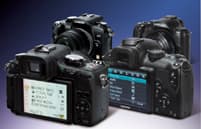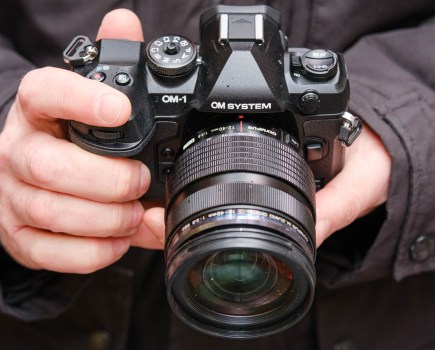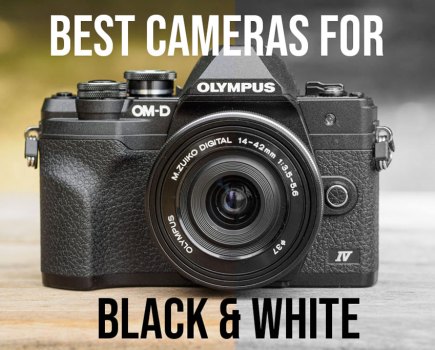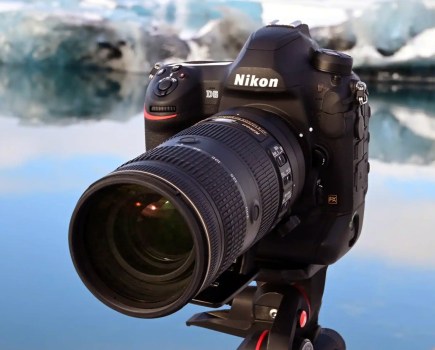Panasonic Lumix DMC-G2 vs Samsung NX10 at a glance
| Panasonic lumix DMC-G2: | Samsung NX10: |
| 12.1-million-pixel | 14.6-million-pixel |
| Four Thirds Live MOS sensor | APS-C-sized CMOS sensor |
| 1280×720-pixel video resolution | 1280×720-pixel video resolution |
| 3in articulated touchscreen | 3in AMOLED screen |
| Street price around £549 (body only) | Street price around £520 with 18-55mm kit lens |
Panasonic Lumix DMC-G2 vs Samsung NX10
It seems that hardly a month goes by without a new development in the world of micro-system cameras (MSC).
Already this year we have seen Sony’s new NEX system, as well as the launch of the Samsung NX10. While Samsung and Sony are both new to the game, Panasonic is now something of an old hand, having been the first manufacturer to release a digital micro-system camera in September 2008.
That camera was the Panasonic Lumix DMC-G1, which was also the first Micro Four Thirds model. However, in the world of digital cameras nothing stands still for long, and with the micro-system camera market being one of the largest areas of growth, manufacturers must keep expanding, updating and refreshing their ranges. With this in mind, it was no surprise that Panasonic launched the successor to the G1 in March this year.
Predictably named the Lumix DMC-G2, the second-generation Panasonic Micro Four Thirds camera brings a number of new features to the table. The most interesting of these is a touch-sensitive screen, but as I wrote in my review of the G2 in AP 15 May, while this screen provides a few advantages, it doesn’t really offer much to improve the handling of the camera.
Meanwhile, in our initial review of the Samsung NX10 (AP 3 April) we were very impressed with its handling. Designed as a direct competitor to the Micro Four Thirds system, the NX10 has a larger, APS-C-size sensor, which should enable better image quality. It also has a slim body that feels very much like that of a miniature DSLR.
Despite announcing its intention to release the NX system just a few weeks after the launch of the Micro Four Thirds concept, Samsung was in no rush to release the NX10. Instead, it seems the company spent some time studying the success of the Panasonic and Olympus Micro Four Thirds products and perfecting its own NX system.
The question is, how does the second-generation Panasonic camera, the Lumix DMC-G2, compare to the first-generation Samsung NX10 camera, and exactly what difference will the NX10’s larger, APS-C sensor make?
Panasonic Lumix DMC-G2 vs Samsung NX10 – Features
The biggest difference between the two cameras is that they use different sized sensors. Panasonic adheres to the Micro Four Thirds standard and the Lumix DMC-G2 has a 17.3x13mm, 12.1-million-pixel, Live MOS, Four Thirds sensor. Samsung has opted for a larger, 23.4×15.6mm, APS-C-sized sensor for its NX-system cameras, including the NX10, which has a 14.6-million-pixel CMOS sensor.
As the G2 is a Micro Four Thirds-system camera, it already has an established range of compatible lenses, including those produced by Olympus for its own Pen series of Micro Four Thirds cameras.
Samsung’s NX system is far newer, though, and there are currently only three lenses available. With focal lengths of 18-55mm and 55-200mm, as well as a monofocal 30mm pancake lens, there is enough coverage to satisfy every photographer’s basic requirements.
Samsung has also promised that the NX lens range will quickly build to eight optics, adding 20mm pancake, 60mm macro and 18-200mm superzoom lenses initially. If the company sticks to this lens plan, within a year there should be a full complement of NX-series optics to match those produced by Panasonic and Olympus for the Micro Four Thirds system.
One reason for the popularity of micro-system cameras is that they have a smaller flange depth compared to 35mm and DSLR models. This means that many lenses can be mounted to micro-system cameras via a simple adapter. Novoflex produces adapters that are compatible with both the NX and Micro Four Thirds mount and these enable many popular lenses to be used, including those with Canon EOS, Nikon F and Sony Alpha mounts.
It is also possible to mount Leica M-series lenses onto the G2 via a suitable adapter. However, due to the length of the bayonets on Leica M-series lenses, it is not possible to fit them, even using an adapter, to the Samsung NX mount.
Many photographers regard the compact Micro Four Thirds system as the perfect opportunity to use Leica M-series lenses on a digital camera, without spending the thousands of pounds necessary for a Leica M9. While the number of people wanting to do this may be a small proportion of the market, it is nevertheless a benefit that an adapter can be used to mount these lenses on the G2, whereas they can’t be mounted on the NX10.
With the digital markets being so competitive, it is innovation that often helps to drive camera sales, particularly for companies that have traditionally been electronics rather than camera manufacturers. These companies hold one definite advantage over the traditional camera manufacturers, which is the ability to transfer new features into their own cameras from their other electronic devices.
Panasonic offers a fine example of this in the form of the G2’s touch-sensitive screen. The G2 is the first interchangeable-lens camera to feature such technology, and it provides photographers with an alternative to buttons for setting adjustments.
Samsung has also incorporated technology in the NX10 that can be found in its other electronic devices. The camera’s 3in, Active-Matrix Organic Light-Emitting Diode (AMOLED) screen uses the same technology found in many of the company’s other products. As AMOLED screens do not require backlighting, they consume less power and have a higher refresh rate, so they should be brighter than traditional LCD screens.
Panasonic Lumix DMC-G2 vs Samsung NX10 – Build and handling
Thanks to the removal of the mirror box and SLR mechanism, both the Lumix DMC-G2 and NX10 are smaller than conventional DSLR cameras. Given that the NX10 uses a fractionally larger sensor, it is surprising that this model is slightly more compact than the G2.
However, while this is true of the camera body, the bigger sensor requires a larger imaging circle than the Four Thirds sensor in the G2, which means NX-system lenses are larger than their Micro Four Thirds counterparts.
Both cameras look and handle like DSLRs, as opposed to the more compact-camera-like stylings of the Olympus Pen E-P1 and Panasonic Lumix DMC-GF1. Similarly, both the NX10 and G2 have polycarbonate bodies that are well constructed. In an attempt to keep the NX10 as small as possible, Samsung has kept the size of the handgrip to a minimum, although it is still big enough for the user to hold it securely. The grip of the G2 is far larger in comparison, and much more like that on a DSLR.
Despite the small size of both cameras, neither of them skimps on features. However, each camera has a different method of how the photographer controls these features. Nearly every shooting option on the G2 has its own dedicated control on the camera body. In fact, there are few areas on the G2 where Panasonic hasn’t managed to squeeze in a button or control – and then, of course, there is the option to control the camera settings via the touchscreen.
In my original test of the G2, I wrote that I was a little sceptical about how well the touchscreen would work. My fears proved unfounded, though, as the touchscreen is responsive and it has on-screen buttons that are large enough to allow features to be changed easily. However, despite the touchscreen’s good performance, it doesn’t actually speed up the process of changing the camera’s settings. In fact, it is quicker and more instinctive to rely on the traditional buttons, switches and dials to control the camera.
Samsung has kept the number of buttons on the Samsung NX10 to a minimum, although access is available to key settings such as white balance and sensitivity via shortcut buttons on the rear of the camera. There are far fewer buttons on the NX10 than there are on the G2, which makes the NX10 handle much more like an entry-level DSLR.
Despite the huge range of controls on the G2, I prefer the build and handling of the NX10. To DSLR users, the NX10 will feel much more familiar, and its menu system is slick, well structured and easy to use.
Panasonic Lumix DMC-G2 vs Samsung NX10 – Noise, resolution and sensitivity

Image: These images show 72ppi sections of images of a resolution chart, captured using the kit lens of both cameras. We show the section of the resolution chart where the camera starts to fail to reproduce the lines separately. The higher the number visible in these images, the better the camera’s detail resolution is at the specified sensitivity setting.

With a physically larger sensor and around two million more pixels, you might expect the Samsung NX10 to be able to resolve far more detail than the Panasonic Lumix DMC-G2. In practice, though, there isn’t much difference between the amount of detail both cameras are able to resolve.
At ISO 100, JPEG images taken on both cameras are able to resolve detail to around 24 on our chart, although the NX10 just edges the G2 when it comes to images saved as raw files.
By ISO 400, the NX10 matches the G2’s JPEG files by reaching 22 on the resolution chart, but once again its raw files perform slightly better as they just about manage to resolve detail up to 26.
Noise reduction begins to take its toll on images from both cameras at ISO 800, with a slight softening of detail.
However, neither luminance nor chroma noise is too problematic in either case. The Samsung NX10 has a maximum sensitivity of ISO 3200. At this setting it performs slightly better than the G2, resolving more detail in both JPEG and raw files. Colour noise is kept to a minimum in images from both cameras, but luminance noise is noticeable.
Although a blur effect is applied to JPEG images taken at this setting, the results from both cameras have a soft, speckled appearance. By shooting raw and carefully processing raw files, colour noise can be almost completely removed from images taken at ISO 3200 in both cameras.
This leaves the user to decide whether to accept slightly less detail or speckled luminance noise.
The G2 has a higher maximum sensitivity than the NX10, reaching ISO 6400. The quality of JPEG images is compromised at this setting, and while colour noise is again kept to a minimum, detail is lost due to the luminance noise reduction. Clearly, the maximum sensitivity setting of the G2 should only be used as a last resort.

Image: Despite the Samsung NX10 having the larger image sensor, it doesn’t offer a much greater advantage at lower sensitivity settings. This image was taken at ISO 400, under tungsten lighting, with the same exposures on both cameras. The tungsten WB of the NX10 has also produced a more neutral result than the tungsten setting on the G2
Panasonic Lumix DMC-G2 vs Samsung NX10 – White balance and colour
When outside, the automatic white balance (AWB) setting of both the NX10 and Lumix DMC-G2 perform extremely well, producing well-balanced, neutral images. Under tungsten lighting, the NX10’s AWB performs far better. Although a yellow cast is still visible, it is not as strong as that produced by the G2 in the same AWB setting.
Switching the G2 to its tungsten white balance setting helps to reduce the yellow cast, but it retains some of atmospheric colour, especially when compared to the completely neutral, tungsten-balanced images from the NX10.
When set to its default colour mode, images from both cameras look similar, although the G2 has the more realistic and natural-looking colours.
The NX10 produces more vivid images in its default setting. The colours are pleasing, and for social and holiday pictures the JPEG files are great for printing without adjustment. However, green grass becomes quite a deep and vivid green. While it doesn’t noticeably affect other shades of green so much and is great if you want punchy pictures, landscape photographers may want to shoot raw images for absolute control over colour.

Image: Although both cameras produce good JPEG images, there is much more scope for altering colour and contrast when adjusting raw images
Each camera offers a range of colour-control options. As well as the customary black & white, vivid and natural options, both models allow custom image styles to be created. These image styles are
known as Picture Wizard in the NX10 and Film Modes in the G2.
Panasonic has also included a useful Multi-Film mode, which allows up to three film modes to be selected. When the shutter is fired, three images are taken in quick succession, each with one of the film modes applied to it. This can be particularly useful if you want to take a standard, vivid and black & white version of the same scene, but don’t want the hassle of editing the image files later on computer.
There isn’t much to separate the two cameras in terms of colour. Of the two, the white balance of the NX10 is preferable. However, the G2 also produces excellent images and renders shades of green better than the NX10, so the G2 may be the better option for landscape photography.

Image: This scene illustrates the differences in the way each camera renders the green colours
Panasonic Lumix DMC-G2 vs Samsung NX10 – Dynamic range
The NX10 and G2 have an identical dynamic range of around 11.5EV, which puts them on a par with their DSLR counterparts. When using Adobe Camera Raw to adjust JPEG files from both cameras, I was able to lighten the exposures by up to +4EV to bring out detail in shadow areas that would otherwise have been lost. Although this introduces a degree of image noise, it is useful to know that both cameras have enough latitude to lighten dark areas.
Panasonic Lumix DMC-G2 vs Samsung NX10 – Metering
In most situations, the NX10 and G2 will be used in their evaluative metering modes and, for the most part, exposures are identical. When there is a difference it is usually only around 0.3EV, which
can often be explained by the different aspect ratios of the two cameras. This may affect the amount of highlight and shadow areas, and alter the exposure accordingly. Where there is a difference it usually results in images from the NX10 being lighter.
In evaluative metering mode, the G2 tends to make sure that burnt-out highlight areas are kept to a minimum, but this does occasionally mean that shadow areas aren’t as bright as they could be. Images taken by the NX10 in evaluative metering mode sometimes sacrifice highlights to ensure that darker midtones and shadows have detail.

Image: In spot metering mode there was no difference in how the cameras exposed this scene
Panasonic Lumix DMC-G2 vs Samsung NX10 LCD, Live View, viewfinder and video
As micro-system cameras, the Panasonic Lumix DMC-G2 and Samsung NX10 are reliant on Live View displays for composing and framing images. Both cameras have 3in screens, although the 614,000-dot monitor of the NX10 is of a slightly higher resolution that the 460,000-dot screen of the G2.
Samsung has used an AMOLED screen in the NX10, which has a higher refresh rate, consumes less power and is brighter than a conventional LCD display. Although the NX10’s display certainly looks better outside in bright sunlight, it doesn’t offer that much of an advantage over the screen of the G2 in most other lighting conditions. In fact, the G2’s screen has a distinct advantage as it is articulated and touch-sensitive, which makes it easier to take photographs at low, high or other awkward angles.
With no mirror box, the viewfinders of both cameras are electronic. Here, the G2 has the advantage, as it has a 1.44-million-dot display compared to the 921,000-dot electronic viewfinder of the NX10. In practice, though, I found both to be perfectly usable.
Although electronic viewfinders are often frowned upon by more traditional photographers, they have come a long way since the low-resolution EVFs that used to be found in early bridge cameras. Electronic viewfinders can even offer a benefit compared to optical viewfinders because the image can be magnified to aid manual focusing – something that is difficult with the smaller viewfinders found on many entry-level DSLRs.
Both the G2 and NX10 can record HD video footage at 1280×720-pixel resolution, but photographers wishing to shoot video footage should opt for the G2. Unlike the NX10, the G2 has an external microphone socket, which means that sound can be recorded in stereo as well as in mono, and the external microphone can be positioned further from the camera lens. The noise produced by the lens when focusing and zooming will therefore not be recorded, unlike when the internal mono microphone is used.
Panasonic Lumix DMC-G2 vs Samsung NX10 – Autofocus
Contrast detection is the order of the day with these two cameras. Given that this is a slower way of focusing than the phase-detection method used in DSLRs, both the NX10 and Lumix DMC-G2 perform extremely well and are surprisingly fast. There has been some debate on various online
forums about whether the Panasonic or Samsung AF system is faster. In single AF mode, I would say that the G2 is noticeably faster, although in practice it makes very little difference in most situations. Compared to the NX10, the G2 is also faster and smoother when focusing in continuous AF mode.
The G2’s AF system has a number of other features, the first of which is AF Tracking. This allows a subject in the scene to be targeted by the AF point, and then tracked as it moves within the frame. For moderately fast-moving subjects, such as people walking or running, this speeds up the process of focusing the camera.
Another great feature of the G2 combines the fast focusing with the touchscreen. The appropriately named Touch Shutter mode allows the user to simply press the touchscreen at the point at which they wish to focus. The G2 responds to this touch and quickly focuses the lens and fires the shutter. In my initial review I was very impressed with just how quickly this process took place.
In low light, both cameras find focus quickly, and both have AF assist beams on the front of the body. These beams are coloured green in the NX10 and red in the G2, and they illuminate the scene slightly so that autofocusing can take place. In low light, the Live View display signal of the G2
is amplified. This allows the user to see the display better, but presumably the amplified image also helps to detect contrast so the AF can work. This could be why it is slightly faster than the NX10, but again the difference in speed will mean little in most situations.
Panasonic Lumix DMC-G2 vs Samsung NX10 – Verdict
Both the Panasonic Lumix DMC-G2 and the Samsung NX10 are excellent micro-system cameras, and each has distinct advantages.
While the G2 has an innovative touchscreen, it doesn’t actually offer much in the way of improving or speeding up the camera handling. That said, the Touch Shutter does brilliantly combine the touch-sensitive screen with the G2’s fast AF system.
Of the two cameras, I prefer the handling of the NX10.
For those more used to DSLR cameras, the button placement of the NX10 should feel a lot more familiar, and the menu system is bright, clear and simple to navigate.
While the APS-C-size sensor that Samsung has used in the NX10 is physically larger and of a higher resolution than the Four Thirds-size sensor found in the Panasonic Lumix DMC-G2, there isn’t a huge gulf in terms of image quality.
In fact, the differences are hardly noticeable at lower sensitivities, and our noise test shows that Panasonic is actually slightly better at controlling colour noise at higher ISO settings.
There is very little to choose between the two cameras and the decision about which is better may depend on their intended use. If video capture is a priority, I would opt for the G2; it also has the faster of the two AF systems. However, if you want a camera that handles more like a DSLR, then the NX10 is the better option.
Given that the NX10 is the first Samsung NX-series camera, it will be very interesting to see how the range develops. As it stands, it is a strong competitor against Panasonic’s G series.
Panasonic Lumix DMC-G2 vs Samsung NX10 Scores
| Panasonic Lumix DMC-G2 | Samsung NX10 | |
| Tested as: | Enthusiast-level MSC | Entry-level MSC |
| Rated: | Good | Good |
| Overall score: | 85% | 86% |
| Features: | 8/10 | 9/10 |
| Noise/resolution: | 28/30 | 28/30 |
| Dynamic range: | 8/10 | 8/10 |
| LCD/viewfinder: | 9/10 | 8/10 |
| Build/handling: | 8/10 | 9/10 |
| Autofocus: | 8/10 | 7/10 |
| Metering: | 8/10 | 8/10 |
| AWB/colour: | 8/10 | 9/10 |
Panasonic Lumix DMC-G2 vs Samsung NX10 Focal points
Adobe Camera Raw support
Camera Raw 5.7 offers support for the Panasonic Lumix DMC-G2 and the Samsung NX10, even though the NX10 isn’t officially listed. Adobe has added the proviso that although raw files from these cameras are supported, ‘profiling and testing is not complete’. Expect full support in version 6.1 of Camera Raw.
Sensor cleaning
Both cameras come with built-in sensor-cleaning systems. It is wise to take extra care when changing lenses as the sensor in these cameras is not protected by a traditional shutter or mirror mechanism.
Aspect ratio
With an APS-C sensor, the native aspect ratio of the Samsung NX10 is 3:2, compared to 4:3 on the Panasonic Lumix DMC-G2. Both cameras have the option of shooting images in 16:9 aspect ratio, which is handy for displaying images on widescreen televisions. The G2 can also shoot images in 1:1 square format.







